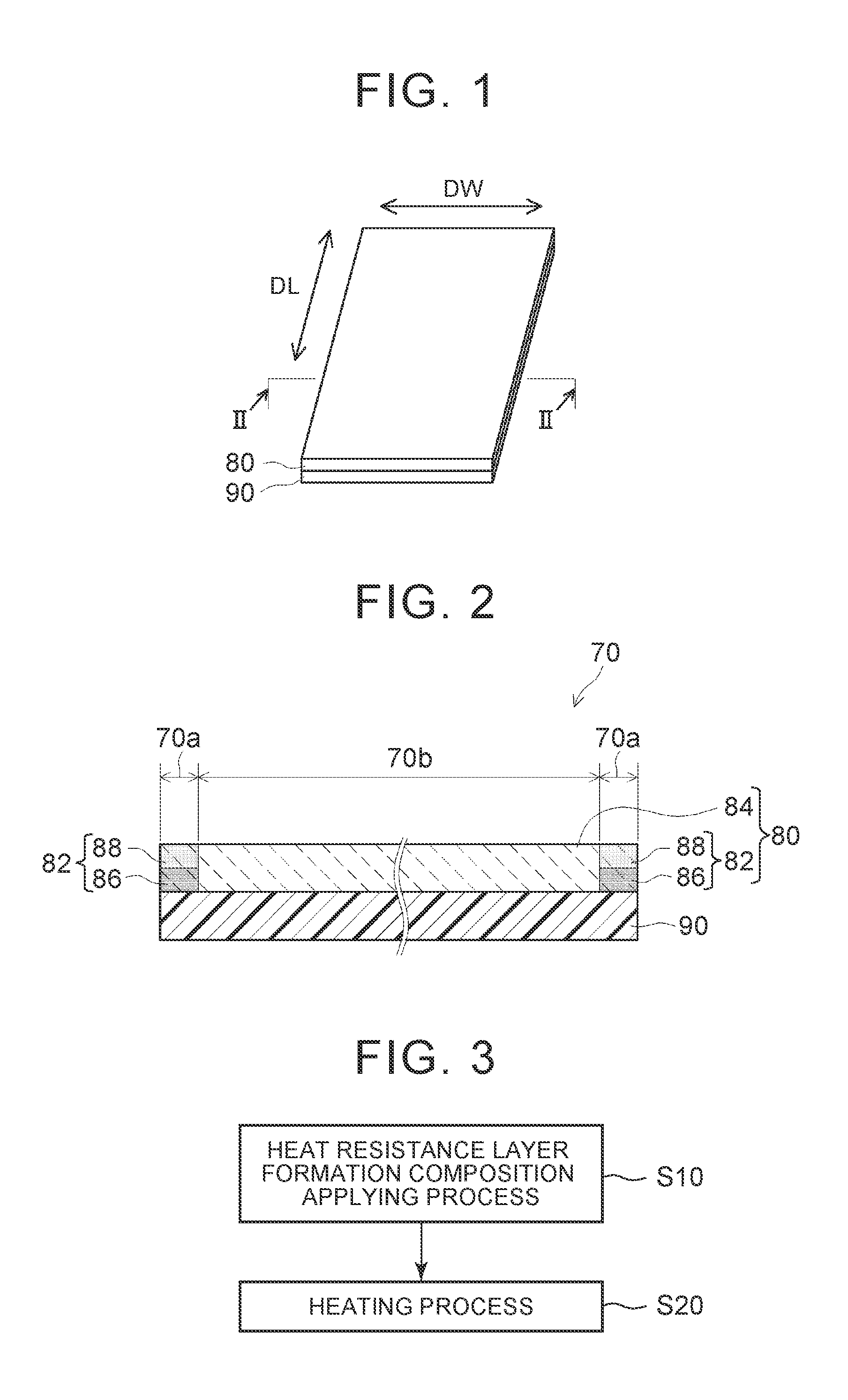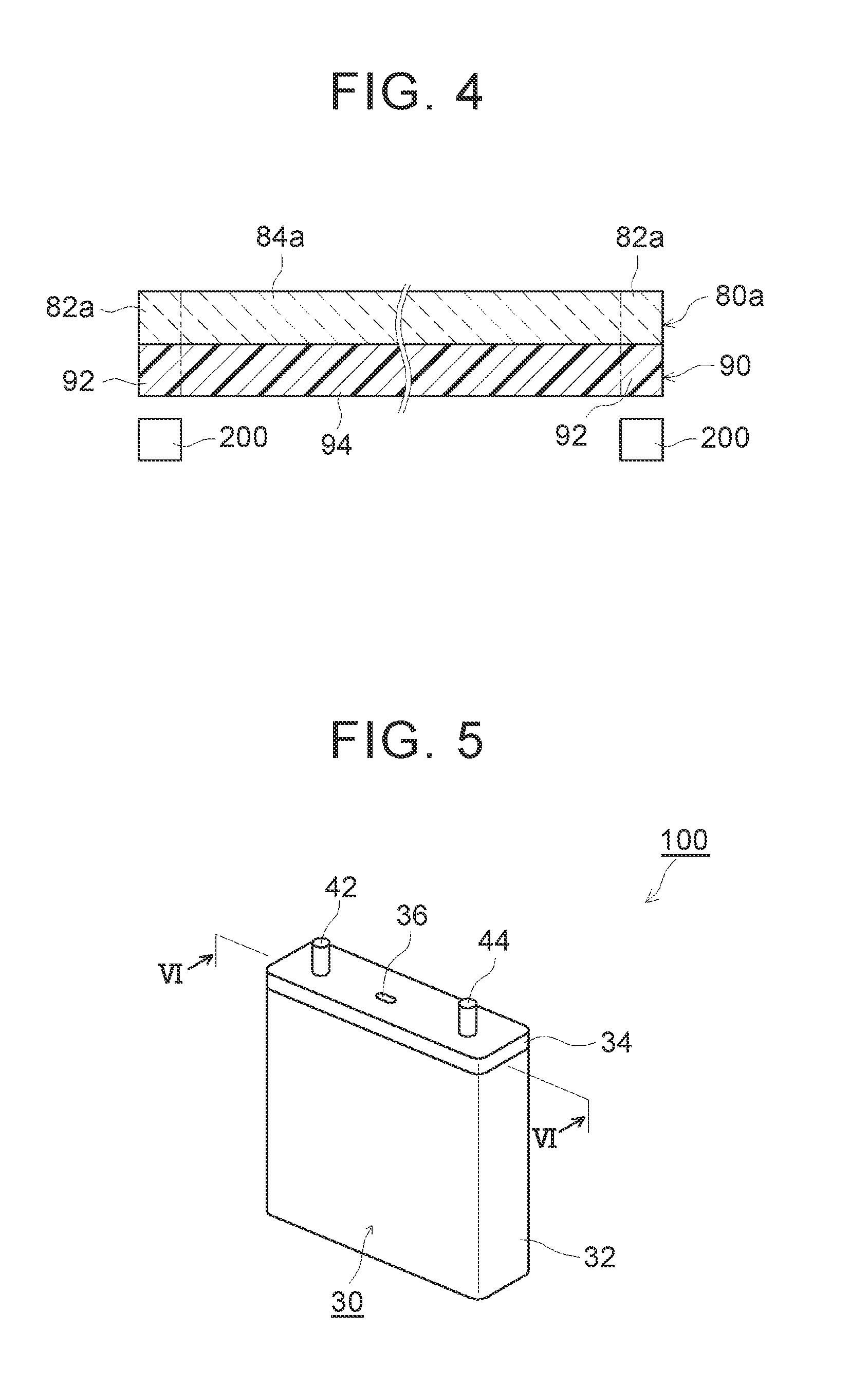Separator for non-aqueous electrolyte secondary battery and manufacturing method thereof
a technology of non-aqueous electrolyte and secondary batteries, which is applied in the manufacture of batteries, cell components, final products, etc., can solve the problems of excessive energy that causes the substrate layer to shrink, peeling of the layer, and short circuit generation, so as to achieve smooth movement, increase the heat resistance layer, and improve the effect of peel strength
- Summary
- Abstract
- Description
- Claims
- Application Information
AI Technical Summary
Benefits of technology
Problems solved by technology
Method used
Image
Examples
example 1
[0086]The separator according to Example 1 was produced as follows. First, alumina as the inorganic filler and the acrylic resin as the binder were mixed with ion-exchange water at a mass ratio of inorganic filler:binder=96:4, thereby preparing a slurry-like (paste-like) heat resistance layer formation composition. The concentration (in terms of NV, that is, in terms of solid content) of the binder contained in the total solid content of the heat resistance layer formation composition is shown in the row of “binder concentration (mass %)” of Table 1. Thereafter, the heat resistance layer formation composition was applied to only one surface of the separator substrate. Here, the application of the heat resistance layer formation composition was performed using a gravure coater so that the heat resistance layer formation composition was applied to the entire surface of the separator substrate (one surface). Next, the heat resistance layer formation composition applied to both end port...
examples 4 , 5 , 10
Examples 4, 5, 10, and 11
[0088]Separators according to Examples 4, 5, 10, and 11 were produced according to the same process and materials as those of Example 2 except that the heating temperatures when both end portions in the width direction of the separators were heated from the separator substrate layer side were 80° C., 110° C., 50° C., and 70° C.
example 6
[0089]A separator according to Example 6 was produced according to the same process and materials as those of Example 1 except that the heat resistance layer formation composition applied to both end portions in the width direction of the substrate layer was not locally heated (that is, both end portions were regions with a width of 0 mm from the edge portions).
PUM
 Login to View More
Login to View More Abstract
Description
Claims
Application Information
 Login to View More
Login to View More - R&D
- Intellectual Property
- Life Sciences
- Materials
- Tech Scout
- Unparalleled Data Quality
- Higher Quality Content
- 60% Fewer Hallucinations
Browse by: Latest US Patents, China's latest patents, Technical Efficacy Thesaurus, Application Domain, Technology Topic, Popular Technical Reports.
© 2025 PatSnap. All rights reserved.Legal|Privacy policy|Modern Slavery Act Transparency Statement|Sitemap|About US| Contact US: help@patsnap.com



